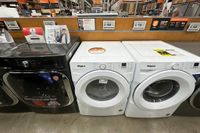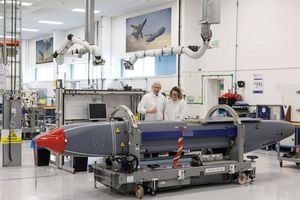Retail spending in the United States showed surprising resilience in July 2025, even as new tariffs imposed by President Donald Trump began to ripple through the economy and stir political debate. According to a report from the Commerce Department released on August 15, retail sales rose by a solid 0.5% from June, with Americans continuing to open their wallets for everything from cars to clothing, despite mounting price pressures and signs of a slowing job market.
June's retail sales numbers were also revised upward, now showing a 0.9% increase instead of the previously reported 0.6%. Excluding the often-volatile auto sector, retail sales still managed a 0.3% gain in July, pointing to broad-based consumer confidence. Auto sales themselves jumped 1.6%, a rebound that analysts say marks a return to more typical spending patterns after months of volatility triggered by tariffs on imported vehicles and parts. Samuel Tombs, chief U.S. economist at Pantheon Macroeconomics, noted that after a surge in purchases earlier this spring—when many Americans rushed to buy cars ahead of a 25% duty—sales appear to have stabilized.
Other retail sectors also posted healthy gains. Clothing stores saw a 0.7% increase in sales, while online retailers benefited from a 0.8% boost—likely helped along by Amazon's Prime Day and similar promotions at rivals like Target and Walmart. Home furnishings and furniture stores enjoyed a 1.4% rise in business, suggesting that consumers are still willing to spend on big-ticket items for their homes.
Not all sectors fared as well. Electronics stores recorded a 0.6% drop in sales, and restaurants—a key barometer of discretionary spending—saw business slip by 0.4% as more shoppers opted to eat at home, perhaps to stretch their budgets. Still, a core category that strips out gas, cars, and restaurants climbed 0.5%, a figure that feeds directly into broader measures of economic consumption and signals that Americans, at least for now, are not pulling back in the face of tariff-induced uncertainty.
"Consumers have a little more spring in their step," Christopher S. Rupkey, chief economist at FWDBonds LLC, told the Associated Press. "Whether this is simply whistling in the dark, time will tell, but the tariff headline chaos did not keep consumers at home in July with the one caveat that they reduced their dining out spending. Retail sales do not give the economy a complete bill of health, but at least the consumer is not in headlong retreat." Still, Rupkey sounded a note of caution, warning that higher prices could eventually dampen enthusiasm: "Time will tell how consumers will react when they see higher prices on goods in shops in the mall in the months to come."
Those higher prices may already be on the way. Consumer prices in July were 2.7% higher than a year earlier, matching June’s annual pace and well above the Federal Reserve’s 2% target. Core prices, which exclude food and energy, rose 3.1%, accelerating from June’s 2.9%. On a monthly basis, overall prices ticked up 0.2%, a slight slowdown from June, but core prices increased by 0.3%. The numbers suggest that while falling gas and grocery prices are helping to offset some of the impact of tariffs, the underlying inflation trend is moving higher.
Wholesale inflation, a harbinger of future consumer prices, jumped an unexpected 0.9% in July from June—the biggest one-month gain in over three years. The producer price index was up 3.3% from a year earlier, according to the Labor Department, signaling that many businesses are facing steeper costs that could soon be passed on to shoppers. Major retailers like Walmart and Target are expected to shed more light on how they're coping with these pressures when they report earnings in the coming weeks.
Some companies are already raising prices. Walmart, the nation's largest retailer, warned that the sting from tariffs would become more pronounced in June and July, with bananas from Costa Rica rising from 50 to 54 cents per pound. John David Rainey, Walmart’s chief financial officer, told the Associated Press that car seats made in China, previously selling for $350, could soon cost customers an extra $100. Other brands, including Procter & Gamble, e.l.f. Cosmetics, Black & Decker, and Ralph Lauren, have also announced price hikes. Warby Parker, the eyewear retailer, is taking a more selective approach, increasing prices on premium lens types while keeping its $95 option intact. "We were able to quickly roll out select strategic price increases that have benefited our growth," said Neil Blumenthal, co-chairman and co-founder of Warby Parker.
Meanwhile, the job market is showing signs of strain. U.S. employers added just 73,000 jobs in July, well below the 115,000 expected, as businesses grapple with the uncertainty caused by tariffs and broader trade tensions. The Labor Department’s figures suggest that while consumers are still spending, the undercurrents in the economy are shifting.
Nowhere is the impact of tariffs more hotly debated than in the case of coffee. On August 15, Representative Ro Khanna (D-Calif.) announced plans to introduce bipartisan legislation to repeal Trump’s 15% to 20% tariffs on imported coffee—a move he argues is urgently needed to relieve American consumers. In a post on X, Khanna pointed out that the U.S. produces less than 1% of the coffee it consumes, relying heavily on imports from Brazil, Vietnam, Indonesia, and Colombia. "Anyone who has a coffee cup always in hand hates this tax!" Khanna wrote, calling it a "tax on Americans at the start of their day" that simply has to go.
Khanna’s campaign has drawn support from economists across the political spectrum. Harvard’s Jason Furman noted that even during President Richard Nixon’s across-the-board tariffs in 1971, coffee was exempted. Furman told Benzinga, "It is hard to understand what the Trump administration is thinking economically, let alone politically, with this one." Economist Justin Wolfers echoed that sentiment, arguing that tariffs on coffee are ineffective because the U.S. simply cannot grow enough coffee to replace imports. "We can’t bring the coffee industry back to the United States, nowhere near enough," Wolfers said, adding that the tariffs amount to "literally a tax on Americans." Data scientist Hunter, writing on X, called the tariffs "mystifying," emphasizing that while the U.S. is the world’s largest coffee consumer, its climate makes domestic production negligible.
Despite the outcry, Khanna has not yet detailed the contents of his proposed bill or provided a timeline for its introduction. The uncertainty leaves consumers and businesses alike waiting to see whether relief is on the horizon—or whether higher coffee prices will become the new normal.
As the summer draws to a close, Americans are left navigating a retail landscape shaped by robust consumer spending, creeping inflation, and a growing political battle over tariffs. Whether shoppers will keep shrugging off price hikes or eventually pull back remains the million-dollar question for businesses, policymakers, and families across the country.





